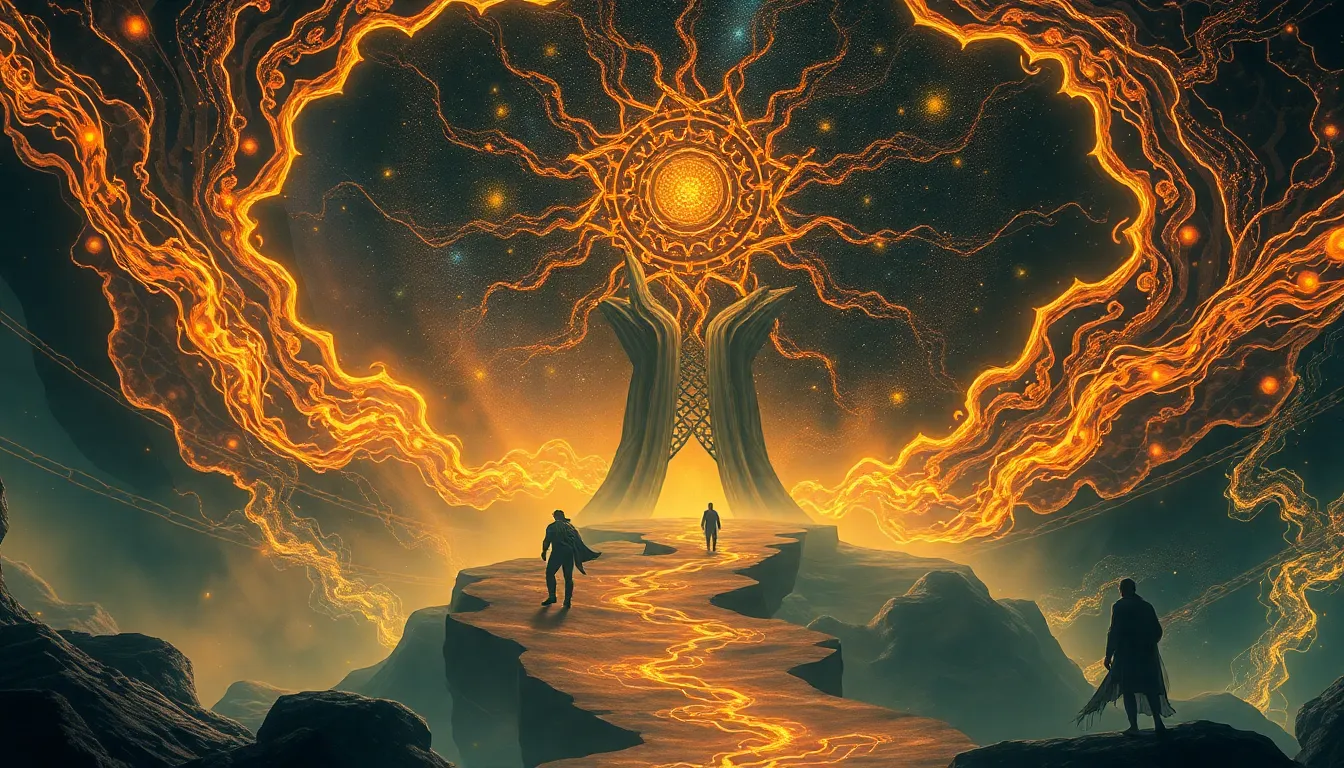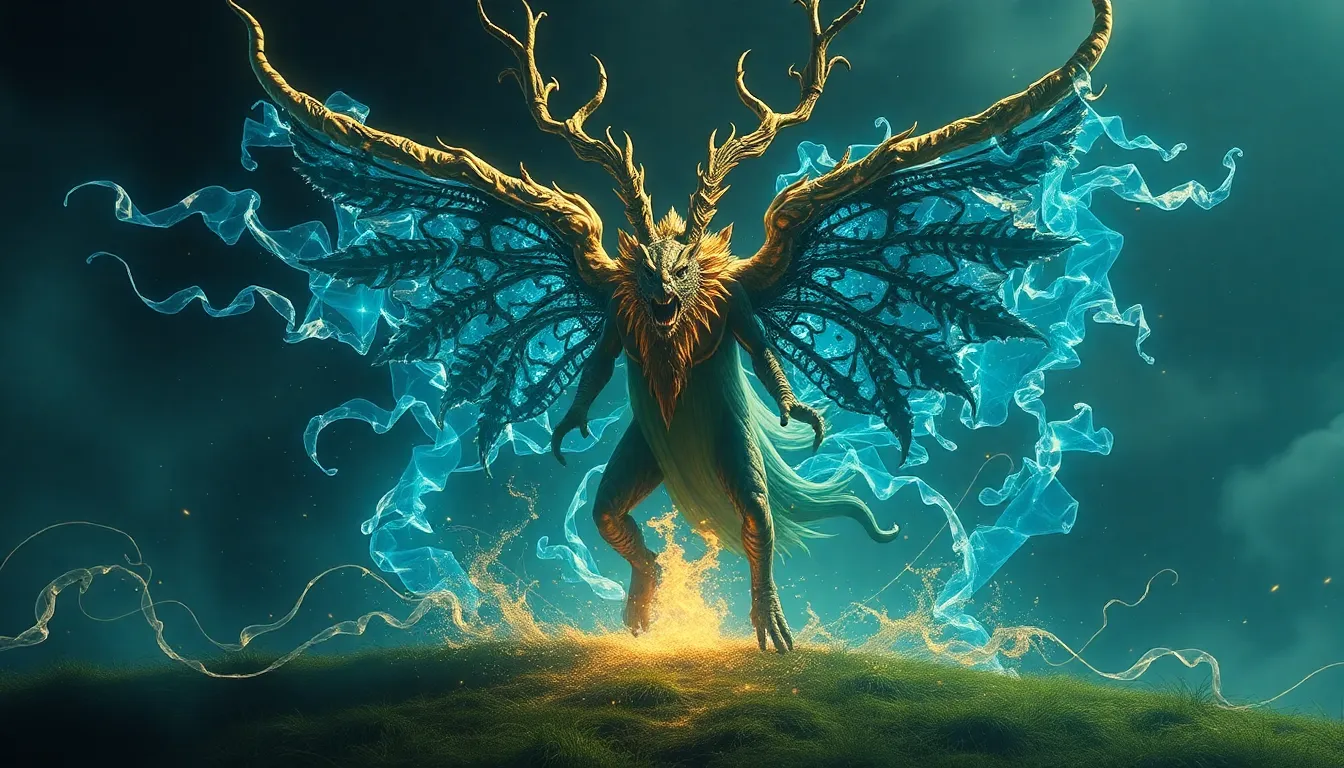The Mythical Mirror: Reflections of Transformation in Legendary Tales
I. Introduction
Mirrors have held a profound place in folklore and literature, often seen as portals to deeper understanding and transformation. The mythical mirror symbolizes not only physical reflection but also the complexities of identity and self-perception. In various legendary tales, the concept of transformation—whether it be of the body, mind, or spirit—plays a central role. This article aims to explore the symbolism and significance of mirrors in myths, shedding light on their transformative power.
II. The Historical Context of Mirrors in Mythology
Throughout history, mirrors have been imbued with rich symbolic meanings across different cultures.
A. Ancient civilizations and their beliefs in mirrors
In ancient Egypt, mirrors were often associated with the goddess Hathor, symbolizing beauty and femininity. The Greeks believed that looking into a mirror could reveal one’s fate, while the Chinese considered mirrors as tools to ward off evil spirits.
B. The role of mirrors in spiritual and religious practices
Mirrors have also played significant roles in spiritual practices. In many cultures, they are used in rituals to signify reflection and introspection, helping individuals connect with their inner selves or the divine.
C. Evolution of mirror symbolism through the ages
As societies progressed, the symbolism of mirrors evolved. From being seen as tools of divination to representations of vanity and self-obsession, mirrors have mirrored societal changes and values over time.
III. The Concept of Transformation in Mythical Narratives
Transformation is a central theme in many mythical narratives, often representing significant shifts in identity and understanding.
A. Definition of transformation in the context of myths
Transformation in myths can be defined as the process by which characters undergo significant changes—physical, emotional, or spiritual—that alter their identities and roles within their stories.
B. Common themes of change: physical, emotional, and spiritual
Common themes of transformation in myths include:
- Physical transformation (e.g., metamorphosis)
- Emotional growth and healing
- Spiritual awakening and enlightenment
C. The importance of transformation in personal and cultural identity
Transformation in myths not only shapes individual journeys but also reflects broader cultural identities, symbolizing the collective struggles and aspirations of societies.
IV. Mirrors as Symbols of Self-Reflection and Identity
Mirrors serve as powerful symbols of self-reflection and identity in mythical tales.
A. The mirror as a tool for self-discovery
By gazing into a mirror, characters often confront their true selves, revealing hidden fears, desires, and truths that lead to profound self-discovery.
B. Legendary tales that emphasize self-reflection
Notable examples include:
- Narcissus: The tale of Narcissus teaches the dangers of self-obsession.
- Snow White: The magic mirror highlights themes of beauty, jealousy, and identity.
C. The duality of mirrors: revealing and concealing one’s true self
Mirrors possess a dual nature; they reflect reality while also concealing deeper truths, often leading characters on journeys of discovery that challenge their perceptions of self.
V. Case Studies of Mythical Mirrors in Legendary Tales
Various legendary tales feature mirrors that encapsulate their transformative power.
A. The Mirror of Erised in “Harry Potter”: Desire vs. Reality
The Mirror of Erised reflects the deepest desires of those who stand before it, illustrating the conflict between longing and reality, and the dangers of becoming consumed by one’s own desires.
B. The Looking Glass in “Alice’s Adventures in Wonderland”: Alternate realities
The Looking Glass serves as a gateway to alternate realities, challenging Alice’s understanding of identity and existence, and representing the fluid nature of perception and reality.
C. The Reflecting Pool in Native American mythology: Connection to the spirit world
In many Native American myths, reflecting pools symbolize a connection to the spirit world, allowing individuals to glimpse their spiritual selves and gain wisdom from their ancestors.
VI. The Role of Mirrors in Feminine Mythology
Mirrors often play a significant role in feminine mythology, highlighting themes of beauty, identity, and transformation.
A. Mirrors as symbols of beauty and vanity in female archetypes
In many legends, mirrors are associated with female beauty and vanity, often serving as a double-edged sword that reveals both allure and superficiality.
B. The transformation of women in myths
Examples of transformation in female figures include:
- Medusa: Once a beautiful maiden, she becomes a monster, symbolizing the consequences of jealousy and betrayal.
- Venus: The goddess of love and beauty embodies the complexities of femininity.
C. Exploring the feminist perspective on mirror symbolism
Feminist interpretations of mirrors often challenge traditional notions of beauty and identity, calling for a deeper understanding of women’s roles and experiences within mythology.
VII. Psychological Interpretations of Mirrors in Myth
Mirrors in myth can also be examined through a psychological lens.
A. Carl Jung’s theory of the shadow self and mirrors
Jung’s concept of the shadow self suggests that mirrors symbolize the parts of ourselves we hide or reject, prompting personal growth and integration.
B. The mirror as a representation of the unconscious mind
Mirrors can serve as metaphors for the unconscious, reflecting our innermost thoughts and feelings, and revealing aspects of ourselves we may not be fully aware of.
C. How mythical mirrors can illustrate psychological transformation
Through the lens of psychology, mythical mirrors illustrate the journey of self-acceptance and the integration of various aspects of identity, leading to holistic transformation.
VIII. Cultural Variations of Mirror Symbolism
The symbolism of mirrors varies significantly across cultures, influencing their role in mythology.
A. Mirrors in Eastern mythology
In Eastern traditions, mirrors often symbolize enlightenment and truth. For instance, in Japanese folklore, the Yata no Kagami represents wisdom and honesty.
B. Mirrors in Western mythology and their implications
In Western narratives, mirrors frequently symbolize vanity and the superficial nature of beauty, as seen in tales like Snow White.
C. Comparative analysis of mirror symbolism across different cultures
Comparing mirror symbolism reveals both universal themes and culturally specific interpretations, enriching our understanding of their significance in mythology.
IX. Contemporary Reflections: Mirrors in Modern Storytelling
The influence of mythical mirrors continues in contemporary storytelling, where they serve as powerful symbols of introspection and transformation.
A. The influence of mythical mirrors in modern narratives
Modern tales often draw on the rich symbolism of mythical mirrors, exploring themes of identity, self-perception, and the quest for authenticity in an increasingly complex world.
B. Mirrors in popular culture
From films to literature, mirrors are used as metaph



